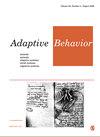Functional adaptability in playing style: A key determinant of competitive football performance
IF 1.3
4区 计算机科学
Q4 COMPUTER SCIENCE, ARTIFICIAL INTELLIGENCE
引用次数: 1
Abstract
Purpose The present study examined the relationship between playing style adaptability and team match performance indicators throughout the season. Three playing style adaptability metrics were analysed, namely, (1) flexibility (i.e., exhibiting a wide range of playing styles), (2) reactivity (i.e., adapting playing style based on opposition) and (3) imposition (i.e., executing predetermined playing style regardless of opposition). Methods Team playing styles were derived through a clustering analysis of 21,708 matches played in the top five male European leagues from 2014/15 to 2019/20. Spearman’s correlation was utilized to assess the association between the three playing style adaptability metrics and four team match performance indicators (e.g., shots taken in opposition penalty box; shots conceded in own penalty box; goals scored; goals conceded; and total wins). Results Playing style flexibility was positively associated with both offensive and defensive match performance indicators and win frequency. Conversely, playing style reactivity and imposition were negatively associated with these team match performance indicators. Conclusions Our results suggest that the capacity to exhibit a wide range of playing styles throughout a season is associated with greater team performance. Furthermore, it is possible that high performing teams are capable of functionally switching between playing style reactivity and imposition, depending on match dynamics.踢球风格的功能适应性:竞技足球表现的关键决定因素
目的探讨球风适应性与球队赛季比赛表现指标之间的关系。我们分析了三种比赛风格适应性指标,即(1)灵活性(即表现出广泛的比赛风格),(2)反应性(即根据对手调整比赛风格)和(3)强制执行(即不管对手如何执行预定的比赛风格)。方法对2014/15 - 2019/20赛季欧洲五大男子联赛的21708场比赛进行聚类分析,得出球队的比赛风格。利用Spearman相关系数来评估三种踢球风格适应性指标与四项球队比赛表现指标(如:对方禁区内射门次数;在己方禁区内失球;进球;目标承认;总胜率)。结果踢球风格灵活性与攻守比赛表现指标和胜率呈正相关。相反,比赛风格的反应性和强加与这些球队比赛表现指标负相关。我们的研究结果表明,在一个赛季中表现出多种比赛风格的能力与更好的团队表现有关。此外,高水平的球队有可能根据比赛动态,在比赛风格的反应性和强加性之间进行功能切换。
本文章由计算机程序翻译,如有差异,请以英文原文为准。
求助全文
约1分钟内获得全文
求助全文
来源期刊

Adaptive Behavior
工程技术-计算机:人工智能
CiteScore
4.30
自引率
18.80%
发文量
34
审稿时长
>12 weeks
期刊介绍:
_Adaptive Behavior_ publishes articles on adaptive behaviour in living organisms and autonomous artificial systems. The official journal of the _International Society of Adaptive Behavior_, _Adaptive Behavior_, addresses topics such as perception and motor control, embodied cognition, learning and evolution, neural mechanisms, artificial intelligence, behavioral sequences, motivation and emotion, characterization of environments, decision making, collective and social behavior, navigation, foraging, communication and signalling.
Print ISSN: 1059-7123
 求助内容:
求助内容: 应助结果提醒方式:
应助结果提醒方式:


